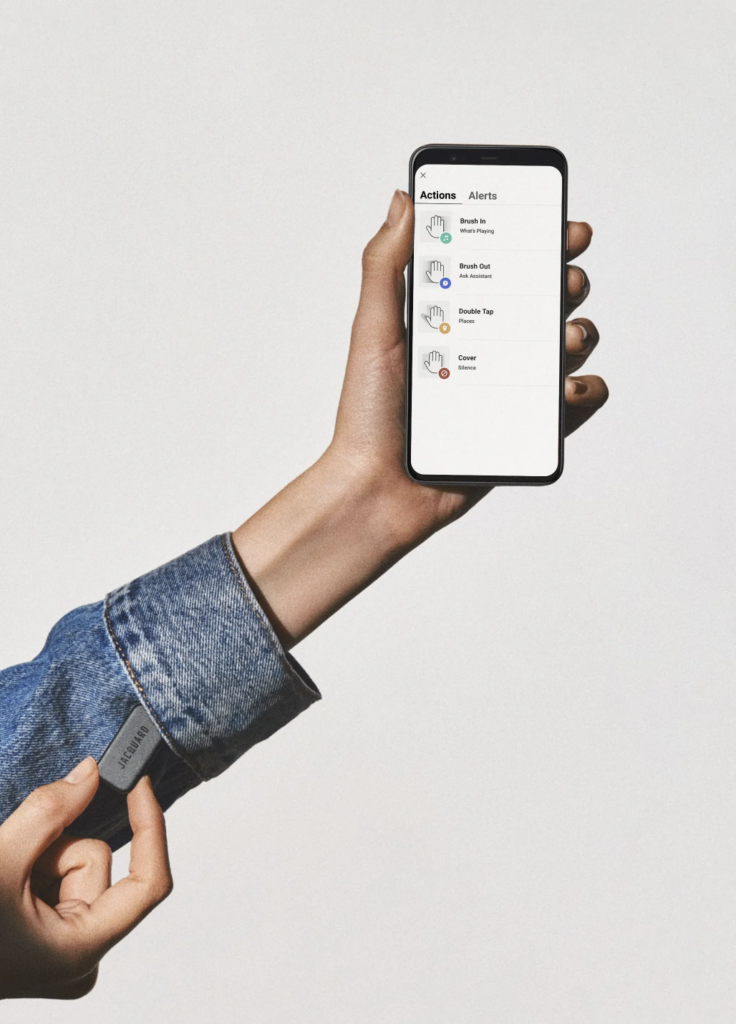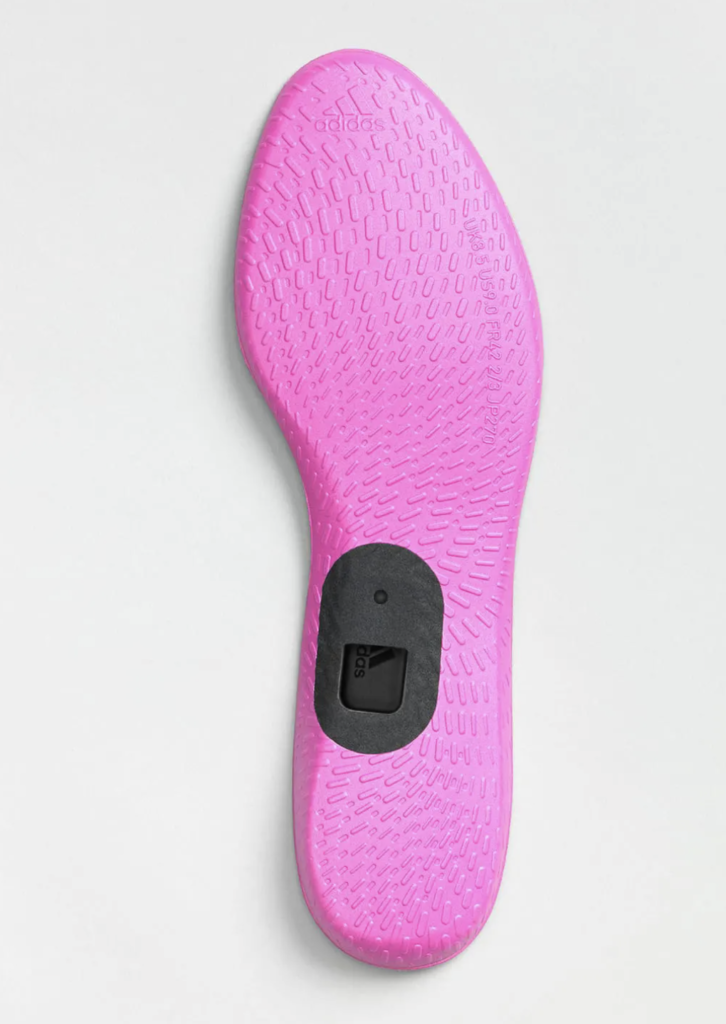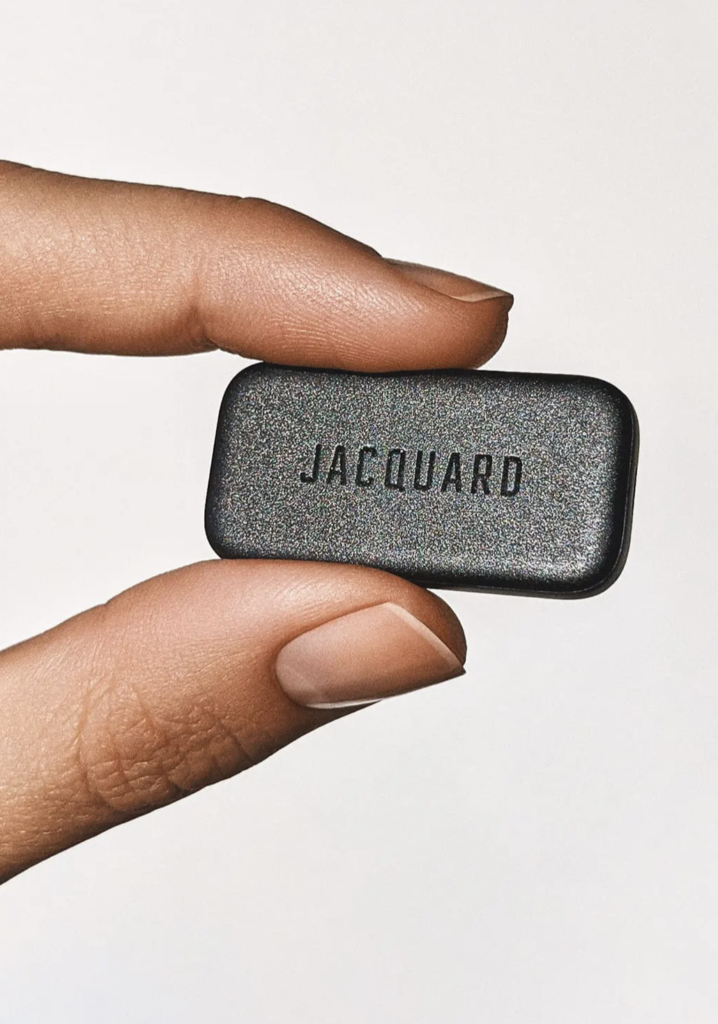The Jacquard tag by Google is a wearable technology that is able to live within your daily objects. By integrating, the tag connects physical things to the everyday needs of technology with simple gestures which can be customized within an app. The tag benefits people with disabilities with simplified ways to use technology with compatibility and ultility.
The Features
Small and Integrated Into Everyday Life
The tag is a tiny yet powerful device that can be woven into the fabric. It can be intergrated into any everyday clothing to accompany the needs of users — from a jean jacket, a backpack, to a pair of shoes. As the website stated, the tag is intended to “enhance them with new digital abilities and experiences, while remaining true to their original purposes”. The scailability and adaptability of the tag is something that can be very helpful for people with disabilities to manipulate their technology from the different objects they use on a daily basis. It is also discreet enough to not to emphasize on the “accessibility” aspects which I will cover more later in this post.
Easy to Use for Most Users
The tag is simply setted up from an app where users are able to customize motions– swiping, tapping, pressing. The commands will allow quick and easy access to basic tech functionality such as skipping musics, reading text messages, or turning off lights with Google Home. The simple motions saves users who are unable to use smart phones efficiently a lot of effort and helps them focus on enjoying what technology can bring them, rather than focusing on how hard it is for them to access the functionalities. I would say that it is still excluding users who are unable to perform hand gestures. Perhaps in the future, it will bring in more features such as voice control to be able to give more people a chance to enjoy this technology.

The Jacquard App that allows customized motions to control your technolgy. 
A first of its kind gaming technology from adidas, EA SPORTS FIFA Mobile and Jacquard™ by Google, that creates a new experience by connecting physical football and digital gaming. (Jacquard)
Disability Models
The Social Model
The Jacquard tag falls under the social model of disability because of how it brings normal life back to the people with disabilities. Its discreetness and universal use in some way prevented people with disabilities from being excluded or being overly focused-on, and is able to blend everyone together. As the social model emphasizes that disability is a normal part of life and is against social barriers or discriminations, the tag falls perfectly under this category and does a great job of embracing the needs of everyone.
NOT the Charity Model
Instead of overly emphasizing its “accessibility”, the brand website never really used the jargon of its uses for disabilities to market its special functionality (Even though they have purposely “co-create and co-develop” this product with teenagers from a disability school to make it accessible and user-friendly). Rather, it created an atmosphere that speaks to everyone that simply enjoys using technology and are looking for a better experience.
The Functional Solutions Model
The tag does a great job of elimitating limitations that smart phones can have toward people with disabilities. For exmaple, as someone who is visually impaired, he/she is able to swipe left or right to skip musics on the jacket. As someone who uses a wheelchair, he/she is able to turn off the lights easily with a simple tap on the backpack. Simple gestures help them overcome the physical limitations with scalabilities and compatibilities among a diverse range of other technologies such as smart home devices, digital gaming, photography, and more.
Conclusion
The Jacquard tag is a really great wearable technology that blends innovation into everyday life. The integration of everyday objects makes it even more special as it is something as simeple as clothings and shoes. They are things that are relatable and personal to everyone. The project itself is created in a heart-warming way. I really apprecaite the fact that they didn’t use its accessibiliy as a point to sell, and instead to market it as something that can be useful for everyone. However, as I mentioned above, there are still much more opportunities to be explored by integrating more diverse functionalities and a varieties of objects, and making it apply to even more people with limitations in the future.
